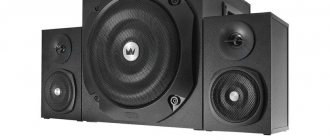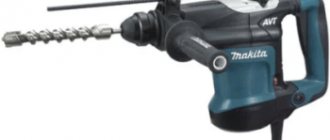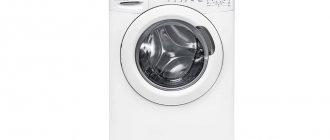Choosing a Wi-Fi router is a difficult task for inexperienced users. We compiled our router ratings long and carefully. We analyzed sales statistics and ratings on Yandex Market, studied reviews from ordinary users, and read reviews of the best home routers released in 2020-2021. And, of course, they brought in their own experts. The models are divided into price segments: inexpensive routers, mid-range devices and premium routers.
If none of the models from the top 15 suits you, read about what criteria and characteristics you need to pay attention to when choosing a device.
Rating of the TOP 20 best Wi-Fi routers for home
| Place | Model | Price |
| The best routers in terms of price/quality ratio | ||
| #1 | Xiaomi Mi Wi-Fi Router 4A Gigabit Edition | |
| #2 | Netis N1 | |
| #3 | TP-LINK Archer AX50 | |
| #4 | Keenetic Air (KN-1611) | |
| #5 | Keenetic Extra (KN-1711) | |
| The best inexpensive models under 1500 rubles | ||
| #1 | Netis MW5230 | |
| #2 | MikroTik hAP lite | |
| #3 | Xiaomi Mi Wi-Fi Router 4A | |
| #4 | Netis N4 | |
| #5 | TP-LINK TL-MR3020 | |
| The best powerful routers for a large apartment | ||
| #1 | Keenetic Ultra (KN-1810) | |
| #2 | Xiaomi AIoT AX3600 | |
| #3 | ASUS RT-AX58U | |
| #4 | ASUS RT-AX82U | |
| #5 | ASUS RT-AX92U | |
| Models with the ability to connect a SIM card | ||
| #1 | Keenetic Runner 4G (KN-2210) | |
| #2 | HUAWEI B315S | |
| #3 | ZYXEL LTE3202-M430 | |
| #4 | TP-LINK M7350 | |
| #5 | ZTE MF283 | |
Page navigation:
How to choose a router: criteria
When choosing a router, you should pay attention to the following characteristics and features:
- Bandwidth. The speed of the router must at least match the speed of the selected tariff plan. It is better if the channel capacity declared by the device manufacturer is higher than the corresponding tariff specification.
- Wi-Fi coverage. The area of a good Wi-Fi network signal is indicated without taking into account barriers between devices. High-quality, uninterrupted operation of a wireless network is only possible with equipment that has a wide range.
- Antennas. Everything said above is equally correlated with the number and power of antennas in the router. With one antenna, a device will not surprise you with good speed performance; it is better to give preference to devices with three or four antennas.
- USB interface. Using the appropriate connector, you can connect external data storage devices and a 3G/4G modem (if such an option is declared). The latter makes it possible to connect to the network of mobile providers, just like on a smartphone.
- LAN ports. The speed capabilities of Ethernet ports are much higher than those of a Wi-Fi network. Not only PCs, but also advanced receivers or TVs are connected to Ethernet ports. A channel speed of 1 Gbit/s is the ideal option today.
- Control. Configuration and other operations with the router are performed via the web interface. Many modern models can also be controlled via a smartphone through a special application.
How can it be used?
Overall, a Wi-Fi mini router is a unique device that can reach a wide audience. Despite its size, it is capable of all the functions offered by a standard router. Therefore, there are many ways to use the miniature device:
- Use as a repeater (to expand the network or connect several independent local networks).
- Use as the main device for distributing 3G/4G Internet (when connected to a modem and an external Yagi antenna).
- Use as a wireless adapter when connecting to old ADSL modems without Wi-Fi.
And the number of ports depends on the size of the router itself. The smallest one has only two: LAN and USB.
The best routers in terms of price/quality ratio
The most popular and rated device models meet this criterion.
Note! With high quality workmanship, they have an affordable price tag.
Rating of the best Wi-Fi routers for the home in terms of price and quality.
Xiaomi Mi Wi-Fi Router 4A Gigabit Edition
The presented model is designed to simultaneously receive and transmit data over two frequencies at once, providing any supported device with a wireless connection speed of up to 1167 Mbit/s.
Four powerful external antennas boast a gain of 6 dbi.
This guarantees significant signal coverage and a stable connection regardless of obstacles.
The WEP, WPA and WPA2 protocols are responsible for securing the connection.
Gigabit LAN ports make it possible to organize a wired connection with the provider’s network.
The working configuration is configured using a web interface and a proprietary mobile application.
Specifications:
- Wi-Fi operating frequencies - 2.4/5 GHz;
- standards support - 802.11 b, a, g, n, ac;
- wireless communication speed - 1167 Mbps;
- Internet connection - WAN;
- LAN ports - 2 × 1 Gbps;
- network infrastructures - DHCP, Firewall, NAT;
- encryption - WEP, WPA, WPA2;
- dimensions - 201 × 25 × 122 mm;
- features - comes with a Chinese plug, Smart Home ecosystem.
Advantages
- ease of control via a mobile application;
- high data transfer speed;
- pleasant indication of operating modes;
- small overall dimensions.
Flaws
- there is no possibility of wall mounting;
- few LAN ports;
- uncritical heating during operation.
Netis N1
Equipped with two external antennas, the model is capable of providing high-quality wireless signal propagation within a large house or apartment with a complex room configuration.
The device is equipped with an intuitive display system located on the front panel.
The router supports two Wi-Fi bands with the ability to operate them simultaneously.
Wired communication is represented by four LAN ports with a base speed of 1 Gbit/s.
Additionally, the device is equipped with a USB port with the ability to connect a GSM modem, organize a DLNA server, FTP, Samba. Management is carried out via a web interface.
Specifications:
- Wi-Fi operating frequencies - 2.4/5 GHz;
- standards support - 802.11 b, a, g, n, ac;
- wireless communication speed - 1167 Mbps;
- Internet connection - WAN, USB modem;
- LAN ports - 4 × 1 Gbps;
- network infrastructures - DHCP, NAT, D DNS, DMZ;
- encryption - WEP, WPA, WPA2;
- dimensions - 263 × 37 × 147 mm;
- features - FTP, file server.
Advantages
- easy initial setup;
- ease of use in general;
- modes for advanced users;
- high transmitter power;
- nice appearance.
Flaws
- a small list of supported modems;
- Vertical installation is not provided.
TP-LINK Archer AX50
The Wi-Fi router with support for FTP, Time Machine and media server options corresponds to the Wi-Fi AX3000 class and is assembled in an impressive case made of high-quality materials.
In addition to the USB port, the device is equipped with four Gigabit LAN ports. The router is capable of providing high speed data transfer via Wi-Fi.
Four powerful external antennas are also responsible for this.
The router supports simultaneous Wi-Fi connections for up to 256 client devices.
The device is controlled both through the web interface and using a mobile application.
The equipment is intended for indoor installation, including wall mounting.
Specifications:
- Wi-Fi operating frequencies - 2.4/5 GHz;
- support for standards - 802.11 b, a, g, n, ac, ax;
- wireless communication speed - 2402 Mbps;
- Internet connection - WAN;
- LAN ports - 4 × 1 Gbps;
- network infrastructures - DHCP, SPI, NAT, D DNS, DMZ;
- encryption - WEP, WPA, WPA2;
- dimensions - 260 × 39 × 135 mm;
- features - FTP, Samba support.
Advantages
- inexpensive model;
- gigabit WAN ports;
- possibility of turning off the indication;
- powerful signal;
- easy setup.
Flaws
- design for everyone;
- heating during operation;
- the number of FTP connections is limited to four.
Keenetic Air (KN-1611)
The presented Wi-Fi router has the ability to manage and configure through a convenient web interface and an intuitive mobile application for quickly and easily organizing a stable Internet connection.
The model supports two Wi-Fi bands - 2.4 and 5 GHz, which can be useful when the network is busy.
There is also the possibility of a wired connection with a maximum speed of up to 100 Mbit/s.
The total number of LAN and WAN ports is five.
The router package includes a patch cord for connecting to the provider’s network, a compact power adapter, and instructions for using and configuring the equipment.
Specifications:
- Wi-Fi operating frequencies - 2.4/5 GHz;
- standards support - 802.11 b, a, g, n, ac;
- wireless communication speed - 1167 Mbps;
- Internet connection - WAN;
- LAN ports - 4 × 100 Mbps;
- network infrastructures - DHCP, Firewall, NAT, SPI, Dynamic DNS, DMZ;
- encryption - WEP, WPA, WPA2;
- dimensions - 159 × 29 × 110 mm;
- features - repeater mode.
Advantages
- wide signal coverage;
- easy connection and control via a mobile application;
- ability to control connected devices;
- high signal stability.
Flaws
- there is heating during operation;
- short power adapter cord;
- High price tag compared to similar products.
Keenetic Extra (KN-1711)
The presented router has the ability to connect a USB modem to organize Internet access from a smartphone, computer, laptop and other digital devices.
Connecting using mobile resources may be relevant where there is no cable Internet, for example, in a summer cottage.
The device supports Wi-Fi bands at 2.4 and 5 GHz. The total number of LAN ports is four.
The equipment is characterized by its small overall dimensions and light weight.
The body of the device is made of high-quality plastic. The informative LED indication can be switched off if necessary.
Specifications:
- Wi-Fi operating frequencies - 2.4/5 GHz;
- standards support - 802.11 b, a, g, n, ac;
- wireless communication speed - 1167 Mbps;
- Internet connection - WAN, USB modem;
- LAN ports - 4 × 1 Gbps;
- network infrastructures - DHCP, Firewall, NAT, SPI, D DNS, DMZ;
- encryption - WEP, WPA, WPA2;
- dimensions - 159 × 29 × 110 mm;
- features - bridge/repeater modes.
Advantages
- Ease of use;
- simple settings and controls;
- stable operation of wireless and wired connections;
- powerful Wi-Fi signal at 5 and 2.4 GHz;
- the indication can be turned off.
Flaws
- cannot be installed in a vertical position;
- low download speed of the torrent client;
- The included cable is not long enough.
The best inexpensive models under 1500 rubles
A budget niche does not necessarily mean weak and low-quality products.
Keep in mind! Some devices are comparable in functionality even to advanced models.
Review of the TOP 5 best inexpensive routers based on customer reviews and ratings for apartments.
Netis MW5230
This inexpensive router supports two options for accessing the Internet - using a 3G/4G modem or through a more conventional Ethernet connection via cable.
The model is equipped with a Wi-Fi transmitter with a frequency of 2.4 GHz with a maximum connection speed of 300 Mbit/s.
External fixed antennas have a high gain.
Wired connection of network devices through the router is made via LAN ports at speeds of up to 100 Mbit/s.
You can manage and configure the router via the web interface or via an external network.
Specifications:
- Wi-Fi operating frequencies - 2.4 GHz;
- standards support - 802.11 b, a, g, n;
- wireless communication speed - 300 Mbps;
- Internet connection - WAN, USB modem;
- LAN ports - 4 × 100 Mbps;
- network infrastructures - DHCP, Firewall, NAT, D DNS, DMZ;
- encryption - WEP, WPA, WPA2;
- dimensions - 88 × 28 × 11.5 mm;
- features - bridge/repeater modes.
Advantages
- simple basic setup;
- support for 4G modems;
- high speed Internet distribution;
- stylish design;
- affordable price.
Flaws
- not the most powerful hardware;
- If the channel is heavily loaded, there may be interruptions in operation.
MikroTik hAP lite
The presented model is one of the most interesting routers in the line, allowing you to access the Internet and create a local wireless network within the office or home space.
With its compact size, the device can be installed in any convenient place.
Despite its small dimensions, the router boasts extensive configuration and management capabilities.
The built-in operating system includes a firewall and network bandwidth control tools.
Using the WPS button, you can connect to the system without entering a password.
Specifications:
- Wi-Fi operating frequencies - 2.4 GHz;
- standards support - 802.11 b, a, g, n;
- wireless communication speed - 433 Mbps;
- Internet connection - WAN, USB modem;
- LAN ports - 4 × 100 Mbps;
- network infrastructures - DHCP, NAT;
- encryption - WEP, WPA, WPA2;
- dimensions - 113 × 89 × 28 mm;
- features - Smart Home ecosystem.
Advantages
- high quality workmanship;
- quite powerful hardware;
- its own operating system;
- many different settings;
- high stability;
- regular firmware updates.
Flaws
- fine tuning is difficult for the average user;
- no wall mounting;
- high price.
Xiaomi Mi Wi-Fi Router 4A
The budget Wi-Fi router, housed in a high-quality composite material case, is equipped with four non-removable, broadly directional antennas for stable and fast connection of various stationary and portable devices.
Sufficient Wi-Fi coverage with simultaneous data transmission at 2.4/5 GHz frequencies is combined with high wireless connection speed.
The device is equipped with two LAN ports for organizing a network between units of stationary equipment via cable.
The working configuration is configured via the web interface. The connection security standards are WEP, WPA and WPA2.
Specifications:
- Wi-Fi operating frequencies - 2.4/5 GHz;
- standards support - 802.11 b, a, g, n, ac;
- wireless communication speed - 1167 Mbps;
- Internet connection - WAN;
- LAN ports - 2 × 100 Mbps;
- network infrastructures - DHCP, Firewall, NAT;
- encryption - WEP, WPA, WPA2;
- dimensions - 188 × 25 × 101 mm;
- features - comes with a Chinese plug, Smart Home ecosystem.
Advantages
- good data transfer speed;
- stable signal in two ranges;
- affordable price tag;
- current design.
Flaws
- no IPTV support;
- not enough LAN ports;
- There is no possibility of wall mounting.
Netis N4
This inexpensive router, which belongs to the SOHO class network devices, is capable of providing Internet access with a Wi-Fi connection at 2.4/5 GHz frequencies, including the simultaneous use of bands.
Support for the 5 GHz band can be useful in case of heavy congestion on the 2.4 GHz channel.
The peak value of the upper range is 1167 Mbit/s.
The design of the model provides two hundred-megabit connectors and a WAN port, indicated in blue.
The equipment supports the VPN pass through function, it is equipped with a firewall, packet filtering by IP, MAC addresses, and TCP/UDP.
Device management is available via the web interface. The device is intended for indoor installation.
Specifications:
- Wi-Fi operating frequencies - 2.4/5 GHz;
- standards support - 802.11 b, a, g, n, ac;
- wireless communication speed - 1167 Mbps;
- Internet connection - WAN;
- LAN ports - 2 × 100 Mbps;
- network infrastructures - DHCP, NAT, D DNS, DMZ;
- encryption - WEP, WPA, WPA2;
- dimensions - 118 × 22 × 86 mm;
- features - bridge/repeater modes, Smart Home ecosystem.
Advantages
- ease of setup and management;
- compact overall dimensions;
- low cost;
- strong signal in both Wi-Fi bands.
Flaws
- heats up under load;
- few LAN ports;
- Not very detailed instructions included.
TP-LINK TL-MR3020
The inexpensive mobile router is a universal portable device that supports more than 120 models of USB modems from various brands operating in 3G and 4G networks.
The presented equipment will appeal to users who often work outside the office and home users without wired Internet.
High-quality connection between the router and the network is ensured by high-speed, seamless switching between modes.
The device is equipped with a USB port with the ability to connect a power adapter.
Connection security is guaranteed by a powerful firewall with an address filtering system.
Specifications:
- Wi-Fi operating frequencies - 2.4 GHz;
- standards support - 802.11 b, a, g, n;
- wireless communication speed - 150 Mbps;
- Internet connection - USB modem;
- network infrastructures - DHCP, Firewall, NAT, SPI, DDNS, DMZ;
- encryption - WEP, WPA, WPA2;
- dimensions - 74 × 22 × 67 mm;
- Features: guest network, WISP technology.
Advantages
- compact dimensions;
- small weight;
- high quality workmanship;
- support for a large number of modems.
Flaws
- little built-in memory;
- the glossy surface gets scratched quickly;
- short cables included.
Compact routers
No form factor has been invented for miniature routers, so each manufacturer has its own degree of “minimalism”.
Lexand LXR-mini
The miniature “box” is equipped only with an instruction manual and a USB-microUSB charging adapter. Unfortunately, the adapter is not included in the kit, but with this connection option it is not difficult to find one.
The dimensions of the device were determined by the LAN port. If it were not there, the device could fit into an even smaller case. Connectors:
- LAN – for wired
- MicroUSB – for power.
- USB0 – connection of a modem and other devices.
On the edge with the power connector there is a RESET button (recessed) and a multifunctional indicator (various lighting and burning options).
Watch a video review of the model here:
Specifications:
- Frequency: 2412-2483 MHz.
- Protocol 802.11 b/g/n up to 150 Mb/sec.
- Encoding: WEP, WPA/ WPA2.
- Supports up to 20 connected devices.
The most interesting thing is that the LAN port works in both directions. That is, the router can be used for:
- Reception of the Internet via cable from the provider and distribution of Wi-Fi.
- Internet transfers from a 3G/4G modem to a computer (or hub) via a patch cord.
By default, an unprotected access point is created. It is recommended to set a password in the settings and select encoding.
MikroTik hAP Mini
Less universal, differs in the number of LAN ports, suitable for transmitting the Internet, both wired and wireless. Device characteristics:
- Protocol 802.11 b/g/n.
- WAN speed – 100 Mbit/sec.
- Wireless network speed – 300 Mbit/sec.
- Encoding: WEP, WPA/ WPA2.
Connectors:
- LAN – 2 pcs.
- MicroUSB (power).
The antenna goes inside the case. RAM – 32 MB, permanent memory – 16 MB. Works with a proprietary shell via a Web interface. What people love about MicroTik is its functionality.
And in this video there is a whole broadcast dedicated to MikroTik hAP Mini:
Asus Lyra Mini
This device, if not in functionality, then in form certainly suggests adding a touch of the futuristic future to its location. When connected to mains power, the encircling LED “illuminates” the router, turning the device into a decorative feature.
By connectors and buttons:
- Port
- Power connector.
- WPS button on the end.
Characteristics:
- Protocol 802.11 b/g/n.
- WAN speed – 1 Gbit/sec.
- Wi-Fi speed – 867+400 Mbit/sec.
- Encoding: WEP, WPA/ WPA2.
- Frequency – 2.4 GHz and 5 GHz.
The peculiarity is that three similar devices can be combined into the ASUS Lyra Mesh Wi-Fi system. With their help, the entire territory of the house is covered and any connected device is provided with a stable connection.
All details of the ASUS Lyra system are described in the following video:
In addition, you can use the fast Wi-Fi connection system via WPS by setting up an access point at 2.4 GHz frequency. And use the 5 GHz access point as the main secure line.
Xiaomi Mi Wi-Fi Mini
Xiaomi has its own vision of a miniature router. The prefix “non-standard” would suit him instead of “mini”.
Regarding buttons and ports:
- LAN – 2 pcs.
- WAN – 1 pc.
- USB – 1 pc.
- Power connector 5
- The RST button is recessed into the body.
Here is an overview and setup of the model in video format:
Characteristics of the Xiaomi Wi-Fi mini router:
- Over-the-air speed up to 300 Mbit/s with a frequency of 2.4 GHz.
- Speed up to 867 Mbps with 5 GHz frequency.
- WAN speed – 1 Gbit/sec.
- RAM 128 MB.
- ROM 16 MB.
The Internet can be received either from a 4G modem connected via USB or via a WAN cable. By default, the access point is configured without a password and protection, so it is advisable to correct this in the settings.
Read all the details about this model here.
What is attractive about the Xiaomi router is the ability to control it from a smartphone through a proprietary application. Cons - Xiaomi services are not as popular as their devices, so for future router owners, using Xiaomi services is not a decisive point when choosing equipment.
The best powerful routers for a large apartment
Important! Even dense reinforced concrete walls will not be an obstacle for the devices presented below.
This is powerful equipment with advanced functionality.
]The best powerful and most reliable models according to expert advice.
Keenetic Ultra (KN-1810)
This powerful Wi-Fi Mesh router is capable of providing a stable high-speed Internet connection to any supported stationary and mobile equipment.
The device supports modern standards IPoE/PPPoE/PPTP/L2TP/802.1X/VLAN 802.1Q/IPv4/IPv6.
Wired communication in it is represented by four LAN ports and one WAN interface.
USB connectors allow you to connect a USB modem.
In access point mode, the equipment supports the Sky cloud service. DNS is an excellent tool for organizing parental controls.
Specifications:
- Wi-Fi operating frequencies - 2.4/5 GHz;
- standards support - 802.11 b, a, g, n, ac;
- wireless speed - 2533 Mbps;
- Internet connection - WAN, USB modem;
- LAN ports - 4 × 1 Gbps;
- network infrastructures - DHCP, Firewall, NAT, SPI, Dynamic DNS, DMZ;
- encryption - WEP, WPA, WPA2, WPA3;
- dimensions - 214 × 33 × 154 mm;
- features - bridge/repeater mode, Mesh support.
Advantages
- speed and range;
- no connection interruptions;
- large range of action;
- convenience and flexibility of the software shell;
- control from a smartphone via Telnet.
Flaws
- slight overheating during operation;
- relatively large size;
- relatively expensive model.
Xiaomi AIoT AX3600
The presented model has the ability to operate in two wireless bands, which implies not only high data transfer speeds, but also excellent resistance to various types of interference.
The wireless channel speed in this equipment reaches 3000 Mbit/s.
Special technologies and a set of powerful antennas help minimize interference in the form of obstacles.
The model is equipped with a powerful hardware platform.
It is a quad-core 64-bit A53 processor and a dual-core IPQ8071A professional network chip with comprehensive performance to meet your most daring needs.
Specifications:
- Wi-Fi operating frequencies - 2.4/5 GHz;
- standards support - 802.11 b, a, g, n, ac;
- wireless communication speed - 3000 Mbps;
- Internet connection - WAN;
- LAN ports - 4 × 1 Gbps;
- network infrastructures - DHCP, Firewall, NAT;
- encryption - WEP, WPA, WPA2;
- dimensions - 408 × 186 × 133 mm;
- Features: 256 MB flash memory, guest network.
Advantages
- large coverage area;
- high Wi-Fi signal strength;
- stable operation without freezes or breaks;
- excellent cooling.
Flaws
- no IPTV support;
- no wall mount;
- relatively large size.
ASUS RT-AX58U
A powerful dual-band router with support for Wi-Fi 6 (802.11ax) and MU MIMO/OFDMA technologies can be a real boon for beginners and advanced users.
The device is equipped with innovative network protection AiProtection Pro based on Trend Micro.
Compatible with the AiMesh Wi-Fi system.
The model supports 160 MHz bandwidth and 1024 QAM for significantly faster wireless connections.
The overall network speed reaches almost 3000 Mbps in the 5 GHz band. The device is controlled via a web interface.
Specifications:
- Wi-Fi operating frequencies - 2.4/5 GHz;
- support for standards - 802.11 b, a, g, n, ac, ax;
- wireless speed - 2976 Mbps;
- Internet connection - WAN, USB modem;
- LAN ports - 4 × 1 Gbps;
- network infrastructures - DHCP, NAT, SPI, D DNS, DMZ;
- encryption - WEP, WPA, WPA2;
- dimensions - 224 × 154 × 160 mm;
- features - bridge/repeater modes, FTP, Smart Home ecosystem.
Advantages
- AX standard (Wi-Fi 6);
- no overheating;
- high-quality materials and assembly;
- nice design;
- Wall mounting is provided.
Flaws
- high price;
- low coverage range;
- difficulty in fine tuning.
ASUS RT-AX82U
The presented Wi-Fi Mesh router with dual-band capability belongs to gaming devices of the AX5400 format with Wi-Fi 6 (802.11ax), mobile gaming mode, Aura backlighting and an information security system.
The functionality of the device is complemented by AiMesh technology, the GearAccelerator function, a gaming port, an Adaptive OoS traffic manager, and a port redirection option.
The equipment supports crazy speeds according to the Wi-Fi 6 standard - up to 5400 Mbps with a channel width of 160 MHz.
In terms of information security, the system is protected from online threats not only by AiProtection Pro based on Trend Micro technologies, but also by supporting the WPA 3 standard.
There is a parental control tool.
Specifications:
- Wi-Fi operating frequencies - 2.4/5 GHz;
- support for standards - 802.11 b, a, g, n, ac, ax;
- wireless communication speed - 5378 Mbps;
- Internet connection - WAN, USB modem;
- LAN ports - 4 × 1 Gbps;
- network infrastructures - DHCP, NAT, D DNS, DMZ;
- encryption - WEP, WPA, WPA2, WPA3;
- dimensions - 275.5 × 275 × 184.4 mm;
- features - FTP, bridge mode, Smart Home ecosystem.
Advantages
- stability of work;
- wide range of action;
- works in conjunction with Mesh devices;
- high data transmission/reception speed;
- powerful hardware;
- various backlight modes.
Flaws
- impressive price tag;
- heats up under load.
ASUS RT-AX92U
A powerful model from a well-known manufacturer of network equipment offers the basis for organizing a Mesh network over a large area or in a multi-storey private house, subject to the purchase of a second similar device.
The Wi-Fi 6 wireless standard guarantees stable and efficient data transmission while simultaneously serving multiple client devices.
The equipment supports 802.11 b, a, g, n, ac and ax standards to connect next-generation devices.
Business-class information security is represented by AiProtection Pro technology.
The module allows you to protect all devices connected to the network, and a flexible parental control tool allows you to control Internet access.
Specifications:
- Wi-Fi operating frequencies - 2.4/5 GHz;
- support for standards - 802.11 b, a, g, n, ac, ax;
- wireless speed - 6071 Mbps;
- Internet connection - WAN, USB modem;
- LAN ports - 4 × 1 Gbps;
- network infrastructures - DHCP, NAT, Firewall, DMZ;
- encryption - WEP, WPA, WPA2;
- dimensions - 155 × 52 × 155 mm;
- features - bridge/repeater modes, FTP, Smart Home ecosystem.
Advantages
- stylish spring look;
- compact dimensions;
- good signal quality;
- high speed Wi-Fi;
- parental control option;
- variety of settings.
Flaws
- long loading;
- heating during operation;
- high price.
Models with the ability to connect a SIM card
The devices presented below will be a real salvation in places where there is no possibility of connecting to a wired Internet.
The devices connect to the operator via a SIM card and distribute the Internet via Wi-Fi.
Keenetic Runner 4G (KN-2210)
A model with support for Mesh technology and a built-in 4G modem with the ability to connect to mobile Internet resources is a relevant solution when organizing a network in a country house or in a remote office center.
When the base station is located at a long distance, users will be able to connect an external LTE antenna to the device via an SMA connector.
The main functions of the device are supplemented by Internet backup options, WISP, VPN, Cloud modes, content filtering, parental controls and guest network.
You can expand your wireless network coverage using the built-in Mesh Wi-Fi system.
Specifications:
- Wi-Fi operating frequencies - 2.4/5 GHz;
- standards support - 802.11 b, a, g, n, ac;
- wireless communication speed - 300 Mbps;
- Internet connection - WAN, SIM card (built-in modem);
- LAN ports - 3 × 100 Mbps;
- network infrastructures - DHCP, Firewall, NAT, SPI, Dynamic DNS;
- encryption - WEP, WPA, WPA2, WPA3;
- dimensions - 159 × 29 × 110 mm;
- features - repeater mode, Mesh support.
Advantages
- simple initial setup;
- possibility of connecting external antennas;
- Wi-Fi range;
- stable work;
- a large number of options and settings.
Flaws
- poorly compatible with outdated operating systems;
- there is heating during operation;
- high price.
HUAWEI B315S
This compact and powerful router with support for dual-band Wi-Fi at 2.4/5 GHz frequencies, as well as 3G/4G networks with connection speeds of up to 300 Mbit/s, will help solve the problem of lack of Internet in a private home or summer cottage.
The SIM card slot makes it possible to use communication services of cellular operators.
Built-in Wi-Fi distributes speed evenly across multiple connected devices.
The equipment is reliably protected from external threats, it is equipped with modern encryption and routing tools.
The device can also be used as a file server, and is also successfully included in the Smart Home ecosystem.
Specifications:
- Wi-Fi operating frequencies - 2.4 GHz;
- wireless communication speed - 300 Mbps;
- Internet connection - SIM card (built-in modem);
- LAN ports - 4 × 1 Gbps;
- network infrastructures - DHCP, NAT;
- encryption - WEP, WPA, WPA2;
- dimensions - 186 × 139 × 46 mm;
- features - RJ-11 connector, SMA ports, file server, two USB ports, Smart Home ecosystem.
Advantages
- stability of work;
- high transmission/reception speed;
- simple basic setup;
- rich functionality.
Flaws
- high price tag;
- supports SIM cards only with modem tariffs;
- There is no possibility of installation on the wall.
ZYXEL LTE3202-M430
A router with the ability to install a SIM card from any domestic telecom operator can be successfully used to organize a stable Internet connection indoors.
The device will help organize an Internet connection where there is access to mobile network resources.
For this purpose, there is support for 2G, 3G and 4G standards on board.
Internet packages are distributed via cable via LAN and wirelessly via Wi-Fi in the 2.4 GHz range with a maximum connection speed of 300 Mbit/s.
The device is connected to the mains using a compact power adapter. Management is carried out via a web interface.
Specifications:
- Wi-Fi operating frequencies - 2.4 GHz;
- wireless communication speed - 300 Mbps;
- Internet connection - WAN, SIM card;
- LAN ports - 4 × 100 Mbps;
- network infrastructures - DHCP, Firewall, NAT, SPI, Dynamic DNS, DMZ;
- encryption - WPA, WPA2;
- dimensions - 163.5 × 31.3 × 146.6 mm;
- Features: SMA connectors, guest network, MIM technology.
Advantages
- supports all telecom operators;
- distribution to 16 devices simultaneously;
- functionality for wired connection;
- high quality workmanship;
- convenient location of indicators.
Flaws
- menu in English;
- small selection of settings;
- slow LAN ports.
TP-LINK M7350
This portable router is one of the innovative network devices that are characterized by stable access to Internet networks even in difficult “field” conditions.
The equipment supports 3G and 4G (LTE) networks. The latter option allows you to develop the maximum speed of receiving data packets.
Internet distribution occurs over a Wi-Fi network with even greater speed.
The device can serve up to 15 client devices simultaneously.
The built-in rechargeable battery allows you to work autonomously for up to 10 hours.
All the necessary physical interfaces are present on board, including micro USB, a SIM card slot, and a slot for a memory card.
Specifications:
- Wi-Fi operating frequencies - 2.4 GHz;
- standards support - 802.11 b, a, g, n;
- wireless communication speed - 300 Mbps;
- Internet connection - SIM card;
- network infrastructures - DHCP, NAT;
- encryption - WEP, WPA, WPA2;
- dimensions - 106 × 16 × 66 mm;
- features - built-in 2550 mAh battery, memory card slot up to 32 GB, FTP, file server.
Advantages
- current design;
- high quality workmanship;
- ease of setup;
- control via application;
- excellent autonomy.
Flaws
- easily soiled plastic body;
- dim battery charge indication;
- heating during active work;
- lack of advanced settings.
ZTE MF283
The presented model is a multi-mode 3G/4G router with the ability to be used in small businesses, office and home spaces.
The device allows you to deploy a full-fledged Wi-Fi network in a couple of minutes with the organization of collective access to high-speed Internet in the support area of the cellular operator’s network.
This does not require installing drivers or additional settings.
The user is required to insert a SIM card into the appropriate slot and connect the device to the mains.
The device supports up to 30 user gadgets simultaneously via Wi-Fi or via an Ethernet cable.
Specifications:
- Wi-Fi operating frequencies - 2.4 GHz;
- standards support - 802.11 b, a, g, n;
- wireless communication speed - 300 Mbps;
- Internet connection - SIM card;
- LAN ports - 4 × 100 Mbps;
- network infrastructures - DHCP, NAT, DMZ;
- encryption - WEP, WPA, WPA2;
- dimensions - 195 × 55 × 150 mm;
- Features: ability to connect an analog telephone.
Advantages
- interesting design;
- excellent connection quality;
- high stability;
- light weight and size;
- two antennas included.
Flaws
- very bright LED indicators;
- not the fastest LAN ports;
- few advanced settings.
How to choose a Wi-Fi router for your home: a short guide to features and capabilities
This letter turned out to be longer only because I had no time to write it shorter. Blaise Pascal
Preface
To begin with, let us outline, so to speak, the area under study. Firstly, we will talk about stationary Wi-Fi routers of the consumer level, or, in other words, the SOHO (Small Office, Home Office) class. All sorts of xDSL, GPON and DOCSIS are left out, since their choice is extremely small, and often such equipment is issued directly by the provider. And this device can be switched to bridge mode in order to install behind it a regular SOHO router purchased independently.
Secondly, it is assumed that the router will be used in an urban environment, that is, in an apartment, and not in a private house. Thirdly, this is not a step-by-step instruction, but rather a set of individual tips, descriptions and comments - what you should pay attention to in the technical characteristics of the device, in reviews and discussions on forums or in comments.
Random picture from the last review to break up the text a little
The material is designed for a less-prepared user, so some points are deliberately simplified. Here we consider only the most popular or frequently (variations of this word will occur, sorry, often) used application scenarios or functions, for which there will always be exceptions. Some of the most important functions or settings are shown in italics.
Finally, this is largely a “theoretical” guide, since most people when choosing a router will be based primarily on its price. In addition, let us pay attention to two more materials that, although they were published several years ago, have not lost their relevance as a whole. We will occasionally refer to them throughout the story.
- How to improve your home Wi-Fi: tips for dummies!
- SOHO router firmware.
Wi-Fi Standards and Marketing Classes
Let's start with those parameters that most consider to be the next most important after price - classes and speeds. In recent years, manufacturers have begun to use marketing classes to indicate the level of devices, sometimes including them directly in the name. These are the same abbreviations like N450, AC2600 or AX3600, where the first letters indicate the maximum supported standard, followed by the total speed value in megabits per second. And the higher this number, the faster the router is, in theory. However, it's not that simple.
The designation indicates the channel, or “clean” (more on this below), wireless connection speed that the router supports. It is determined by the Wi-Fi standard, the number of streams and their width. There are some other parameters, such as the value of the guard interval or additional types of modulations, but for us they are not very significant right now.
| Wi-Fi standards | |||||
| Name | Standard | Range, GHz | Channel width, MHz | Max flows, pcs. | Max channel speed, Mbit/s |
| Wi-Fi 4 (N) | 802.11n | 2,4/5 | 20/40 | 4 | 72.2 (20) / 150 (40) / 200 (40 + 256-QAM) |
| Wi-Fi 5 (AC) | 802.11ac | 5 | 20/40/80/80+80/160 | 4/8 | 200 (40); 433,3 (80); 866,7 (160/80+80) |
| Wi-Fi 6 (AX) | 802.11ax | 2,4/5 | 286,8 (40); 600,5 (80); 1201 (160/80+80) | ||
| Wi-Fi 6E (AX) | 2,4/5/6 | ||||
The table above shows the main characteristics of modern Wi-Fi standards. The last column shows the maximum speed of one channel depending on its width (in parentheses). The data for Wi-Fi 4 (802.11n) is given more for reference - there is no point in buying routers that support only this standard, and it is becoming increasingly difficult to find them on sale. However, you need to know that all new standards are backward compatible with old ones
For example, let's look at the ASUS RT-AX82U. The characteristics given in the review say that this model has two 40-MHz 802.11ax streams in the 2.4 GHz band and four 160-MHz 802.11ax streams in the 5 GHz band: 2 × 286.8 + 4 × 1201 = 573. 6 + 4804 = 5377.2 Mbit/s. We round up to 5400, specify the AX standard - the AX5400 marketing class is ready! True, there is little sense in this. Firstly, there is no practical sense in adding up the speeds of two ranges - each device at any given time is connected to the router in only one range, and the ranges themselves operate independently of each other.
Enable automatic translation of subtitles into Russian
Secondly, the real data transfer speed differs from the channel connection speed, and if the first in practice is about ⅔ of the second, then this is a decent result. In addition, it is divided among all participants in the process. For example, when exchanging data between two identical Wi-Fi devices connected to the same router, each of them will receive only half of the actual speed. This is also due to the fact that Wi-Fi is historically a half-duplex technology, that is, at any given time, data flows from one device to another in only one direction (either client → router, or router → client).
Thirdly, even within the same range and one standard, the same channel speed can be obtained in different ways. For example, in the 5 GHz band, two streams with a channel width of 160 MHz are equivalent to four streams of 80 MHz. By the way, manufacturers often do not explicitly talk about this in the characteristics of routers and client devices, and all this must be looked for either somewhere in the documentation, or in reviews, or on specialized sites and forums.
Adapter supports 4 streams, but is only suitable for desktop PCs
Nevertheless, the question of which network deployment strategy to choose (that is, which router to use) remains open. You need to proceed from what devices you have and what Wi-Fi capabilities they support, and from the air traffic congestion. At first glance, everything is simple - the vast majority of modern devices support either one or two threads. Three- and four-stream Wi-Fi is rather the prerogative of separate PCIe adapters with a remote antenna unit.
Formally, routers with support for three or four channels can simultaneously serve several client devices at any given moment under certain conditions. But only formally. For modern Wi-Fi 5 (AC) routers, manufacturers are required to advertise support for MU-MIMO, which in the case of a router with four streams allows, for example, to simultaneously serve either two dual-stream devices, or one three-stream and one single-stream device.
By the way, MU-MIMO in Wi-Fi 5 only works in the direction from the router to client devices
But they modestly keep silent about the fact that for this, all devices participating in the process must also support MU-MIMO. And there are not many of them in the “wild nature,” even though this technology is not the first year old. And the chance that absolutely all your devices will support it is small. Therefore, for typical scenarios, there is almost no practical sense in specifically choosing a router with three or four Wi-Fi 5 streams.
With Wi-Fi 6 (AX), the situation is both better and worse. The new standard provides for finer “slicing” within the channels themselves, which allows multiple devices to use the entire bandwidth more efficiently. There are other pleasant innovations, such as the possibility of more economical battery consumption for client devices. But the problem is still the same - to take advantage of all these benefits of a Wi-Fi 6 router, all devices connected to it must support Wi-Fi 6.
Channel allocation in the 5 GHz band. Source: Wireless LAN Professionals
With channel width the rule is quite simple. If the 5 GHz band is practically empty (for example, this is a private house), then it is better to take a router with support for 160 MHz channels or 80+80 MHz (in the first case it is just a continuous band, in the second it is divided into two parts). If the airwaves are jammed, then most likely 80 MHz will be enough. In this case, no one bothers to take a model with 160 MHz, but the router itself can forcefully reduce the width to 80 MHz if it decides that the surrounding radio air is too noisy.
There are a few more points. In the 5 GHz band there are only two non-overlapping (that is, not interfering with each other) channels with a width of 160 MHz and five with a width of 80 MHz. Therefore, the chance that the router will find an empty 80 MHz band on the air, or at least one freer from neighboring routers, is much higher. The only catch is that in practice, the upper half of the range (channels 100 to 165) may not be supported by both the router and client devices. In routers intended for sale in Russia, channels 100 to 132 may not be available at all.
The “ideal” picture - all neighbors are huddled in the corners of the 5 GHz band, and the adapter sees nothing in its middle
And in this case, only the lower half of 5 GHz remains (channels 36 to 64), which is more likely not empty. And it has only two wide channels at 80 MHz and one at 160 MHz. Here it should be clarified that some routers have the ability to simultaneously use both halves of the 5 GHz band to create separate networks - they are usually called tri-band, although this is not entirely correct. This is a useful option, as it allows you to place the most speed/latency-demanding or simply modern devices on one of two 5 GHz networks.
But that’s not all - most of the 5 GHz channels, especially in the upper half of the range, are forced by the standard to use DFS (Dynamic Frequency Selection) so as not to interfere with weather radars and other equipment. In practice, this means this: the router periodically “listens” to the radio broadcast - and can switch the channel (reduce the width) or turn off Wi-Fi altogether if it decides that it is disturbing someone.
The "beam" from the north-northwest is interference in the 5 GHz band. Source: Bulletin of the American Meteorological Society
Nevertheless, it is recommended to transfer as many client devices as possible to the 5 GHz range, including forcibly, using Band Steering/SmartConnect. Especially those that require high speed. Those that do not need it, and this is, for example, most inexpensive Internet of Things devices, are better left in the 2.4 GHz range.
In urban environments, the 2.4 GHz band has long been densely packed. You shouldn’t count on Wi-Fi 6 to work in this range, and QAM-256/TurboQAM support, which goes beyond the standard but has still become widespread, although it allows you to increase the “net” channel speed by a third, does not make any difference. And not only Wi-Fi “lives” at 2.4 GHz - a regular microwave oven easily “clogs” the router’s signal during operation if it is located nearby.
Can you count how many Wi-Fi networks you can “hear” in the 2.4 GHz band? True, not all of them really interfere
It is also best to exclude devices that only support older Wi-Fi standards from both bands whenever possible. For 5 GHz it is Wi-Fi 4 (N), for 2.4 GHz it is 802.11g (Wi-Fi 3, although no one calls it that) and 802.11b (Wi-Fi 1). Various tricks in the spirit of Airtime Fairness do not always help, since the presence of even one device of the old standard can negatively affect the work of all the others. Obviously, there is no point in buying a router that only supports 802.11n (Wi-Fi 4).
Based on the above, the following configurations and their corresponding classes in order of increasing speed will be currently acceptable for the average user (pay attention to the second part of the “equation”):
- 2 × 802.11n (40 MHz) + 2 × 802.11ac (80 MHz) = AC1200/AC1300;
- 2 × 802.11n (40 MHz) + 2 × 802.11ac (160 MHz) = AC2000/AC2100;
- 3 × 802.11n (40 MHz) + 3 × 802.11ac (80 MHz) = AC1750/AC1900;
- 2 × 802.11ac (40 MHz) + 2 × 802.11ax (80 MHz) = AX1500/AX1600;
- 2 × 802.11ax (40 MHz) + 2 × 802.11ax (80 MHz) = AX1800;
- 2 × 802.11ax (40 MHz) + 2 × 802.11ax (160 MHz) = AX3000.
The mass user does not really need faster models. Since you are buying a router for at least two to three years, it makes sense to look specifically at AX solutions. During its operation, the number of devices supporting Wi-Fi 6 will increase, and new models of routers will arrive. But there’s no point in chasing Wi-Fi 6E just yet. There are few client devices and routers for it, and even those are mostly premium.
A visual illustration of the scale of Wi-Fi 6E (click to enlarge). Source: Wireless LAN Professionals
However, Wi-Fi 6E is the future. Firstly, it also works in the 6 GHz range, where there are seven non-overlapping channels with a width of 160 MHz (or 14 at 80 MHz), that is, the air is much more free. Secondly, a separate range automatically means that devices of older standards will not fall into it, which means that all the benefits of 802.11ax will always be fully available.
Design
Oddly enough, the design of the router is also important: not from an aesthetic point of view, but from a functional one. The first thing you need to pay attention to is the dimensions and orientation of the device - nowadays even mid-level models sometimes suffer from a tendency towards gigantism, which can come as a surprise after purchase. Some of them can only be placed horizontally, somewhere on a table, others - only vertically, others - this way and that, and you can even hang them on the wall.
Routers have the most unusual designs
This is important for several reasons. Firstly, in any case, during installation you must follow the manufacturer’s recommendations, because cooling is important for any modern router, that is, free access of air to the ventilation holes, otherwise it may overheat. Secondly, you need to think in advance about how convenient it will be to connect the cables at the location where the device is installed.
The photo is staged, but in this case it is a mesh system node that really only requires one cable - from the power supply
On advertising posters, routers stand beautifully somewhere on a cabinet or even on a coffee table in the middle of the room, and for some reason the wires are not visible, but in real life you may not even have enough length of the cord from the power supply, and Ethernet- The cables will bend and you will have to reach the external USB device. And if it is also USB 3.0, and with poor shielding, then occasionally you can still encounter problems in the 2.4 GHz range, although the problem has been known for almost ten years.
One USB port is located in front, the second is in the back
After all, the cables can interfere with each other and external antennas, if any. And thirdly, the antennas must be correctly oriented. For external antennas, this is usually a vertical position, and here it is necessary to take into account their length, which is usually not indicated at all in the description. For routers with internal antennas, the rule is simple - they must be placed as recommended by the manufacturer. For example, the now fashionable “turrets” or “cylinders” should not be placed on their sides.
Are there not enough antennas?
And separately, let us remind you once again that even if the antennas on the router are removable, and there are fewer and fewer of them, then changing the standard ones to some others is a bad idea if you do not fully understand what you are doing and why. Antennas are often advertised that claim a higher gain, which will supposedly improve Wi-Fi performance. On the contrary, higher sensitivity is more likely to lead to the fact that your router will “hear” more neighboring routers, changing its behavior on the air.
Indication varies
Another point that is not obvious at the time of purchase, but more than obvious during operation, is the indication, or rather its location on the body, readability, color, brightness and the ability to turn off manually or on a schedule. Fortunately, the fashion for blinding acid-blue indicators, which can illuminate half a room at night, is gradually going away. But what doesn’t hurt is the presence of individual indicators for each network port, which can sometimes make diagnostics much easier.
Not the best place for a function button
Finally, the last point is buttons. In addition to the reset buttons and the power switch (not always present), there are usually one or two more buttons that can perform various functions: launching WPS to connect a new device to Wi-Fi, enabling a guest Wi-Fi network, disabling Wi-Fi completely , adjusting or turning off the display, safely removing the USB storage device, and so on. The specific set of functions depends on the vendor and firmware, but it is convenient when they can be assigned independently and when at least one button with the most frequently used function is located on the case in an accessible place.
Network ports
A typical router has up to five RJ-45 ports: for a WAN connection (that is, to an Internet provider) and LAN connections (for a local network). This is enough for most users. Moreover, it is increasingly possible to see routers with two or three ports, since most client devices still connect to Wi-Fi. Those who are not satisfied with this need either an external switch (they are not very expensive) or a router of a different class.
The desire for minimalism - or ordinary savings?
Routers with more than five ports are rare, usually expensive, and can have nuances. For example, half the ports can be connected to the remaining ports via a single gigabit connection. Such a router will be positioned as having eight gigabit ports - and formally the manufacturer will be right. But this is no different from the situation with an external switch.
All routers belonging to the Wi-Fi classes listed above should have gigabit (1GbE) ports. If this is not the case, it is better to abandon this model. In more expensive models, ports of 2.5 Gbit/s (2.5GbE) or 5 Gbit/s (5GbE) began to be found, for which, according to the standard, no special cables are needed (unlike 10GbE). But there is almost no practical sense in 2.5/5GbE.
Firstly, there is always only one such port, and it is usually assigned to the WAN connection, although, as a rule, it can also be switched to the LAN. Secondly, there are not very many client devices supporting at least 2.5GbE yet. Thirdly, there are minimal use cases at home. You can, for example, organize a 2.5GbE connection to the NAS, which in theory will allow several clients to simultaneously exchange data with the NAS at a higher speed, but this also depends on the performance of the NAS itself.
Ports for aggregation are marked separately
For the same purpose, an alternative option may be aggregation, that is, combining two (in the case of home routers) wired connections into one “virtual” one with double bandwidth and/or fault tolerance. This option obviously requires two ports and aggregation support from the NAS. In addition, the type of aggregation itself may differ—you will have to look for details about compatibility in the instructions for both devices.
Aggregation should not be confused with another feature commonly called Dual-WAN or Multi-WAN. Although WAN aggregation also occurs, this is a very rare case when it is supported by the Internet provider. Dual-WAN allows the router to work with two (or more) Internet connections from different providers at once. Most often, this means automatic switching from one Internet channel in case of failure to another (and back).
Less commonly, traffic distribution between different providers. This should not be understood as the summation of the speeds of these Internet channels, since by default the router will simply route individual sessions (downloading a file, for example) to one or another provider. And some online services may not like this. However, most often you can still configure the binding of specific devices or services to one of the Internet channels, which can be useful in some work scenarios.
An SFP connector is rarely found in a home router
And a couple more notes. Firstly, despite the massive transition to OTT, there are still providers whose TV set-top boxes require not just a separate LAN port, but additional settings (IGMP). Their support is not available everywhere, so it is better to check compatibility with your provider in advance. Secondly, some routers have an SFP port that allows you to connect, say, an optical transceiver. Some providers provide active fiber connections. It is also useful when you cannot “reach” the connection point with a regular Ethernet cable.
However, to work specifically with GPON, you need both a full-fledged terminal (ONT) in this form factor, and the provider’s consent to register it on its side. In this case, there is no point in trying to find a replacement for the standard router or terminal from the provider; it is better to switch it to bridge mode and install your own router of choice behind it.
Internet and VPN
Manufacturers who have been working on the Russian market for more than a decade support the specific requirements of some providers (of which there are fewer and fewer), requiring PPTP/L2TP support or some additional settings for Internet connection. Younger vendors either have poor support for these standards or don’t have it at all. This must be taken into account if you have such a provider. In addition, such connections create additional load on the router.
A VPN connection to an ISP should not be confused with built-in VPN servers, which are needed for remote access to a home network or simply to protect data exchange when connecting to untrusted networks (public Wi-Fi). The standard set usually includes the same PPTP and L2TP (outdated and not very secure), as well as OpenVPN (better protection, but lower speed) and, at best, Wireguard (good protection, high speed, but more difficult to configure). Sometimes vendors also offer their own VPN implementations, including clients for smartphones.
Branded VPN
There are usually no problems with 3G/4G USB modems from mobile operators if the router is declared to support them. However, it won't hurt to check the compatibility list. You should also take into account that often additional functions (working with SMS, traffic accounting) may not be available. Some vendors support the use of an Android smartphone as a modem, but do not guarantee compatibility. As for routers with built-in modems, you must first look at the support of your operator’s frequencies. A plus for them will be the presence of removable antennas.
Keeping up with the times - separate QoS settings for remote work/study
Having different QoS (prioritization) options in your router is a useful thing, even if you have a very fast Internet connection, since this feature allows you to give priority to certain devices or applications. It's not just about speed, but also about latency. True, the implementation of this mechanism varies from vendor to vendor. Some offer ready-made profiles or “smart” automatic prioritization, others provide only basic configuration options. Prioritization differs from a shaper, that is, a simple speed limiter, which, however, can also be useful.
Game options
Gaming routers primarily rely on prioritization and differ from conventionally non-gaming routers in the ease of setting up QoS for specific games and devices. But on a “regular” router, you can most often do everything manually in exactly the same way. In expensive models you can find additional features such as a dedicated LAN port for the console/PC, a dedicated (third) Wi-Fi band, a built-in gaming VPN client, and so on.
All these features are mainly aimed at reducing latency, but do not guarantee it. In practice, the delay depends not only on the router itself, but also on the provider’s equipment, its connections to the Network, the remoteness of the servers and a host of other factors. This is all relevant not only for games, but also for video conferencing or remote desktop services that have gained popularity due to the pandemic.
Mesh systems
Mesh support in the context of home Wi-Fi implies the ability to combine several nodes - routers, access points or repeaters - into a single system to increase the coverage area of the wireless network. They are relevant either for really large spaces, or for multi-level spaces on several floors, or when walls or other obstacles between separate rooms drown out the Wi-Fi signal.
In recent years, all major vendors have presented their solutions in this area, but mesh products from different manufacturers are not compatible with each other. Some offer ready-made sets of two, three or four devices, others allow you to combine almost any modern device under your own brand, others do both. The first option seems to be the simplest for the end user, although setting up the second option is also, as a rule, simplified to the limit.
Ready-made mesh kit of two identical routers
The most reliable and, in most cases, productive will be to combine mesh nodes (creation of a backbone network) via Ethernet cables. Or if not all nodes, then at least some of them. If they are connected via Wi-Fi, then you need to be prepared for the fact that the actual data transfer speed for the devices will depend on which node it is connected to and how this node is connected to the others. In most configurations, it will be lower than if a single router were used instead of a mesh network.
If it is not possible to stretch the cable, then it is better to use the 5 GHz band to connect nodes to each other, since in this case the communication speed is a priority. This is where the tri-band routers mentioned above come in handy, since the dedicated range for the core network is exactly what is needed. It is also important that the nodes connected to the mesh network are of the same Wi-Fi class (this is the case in ready-made kits). Well, or at least organize the network so that the slowest nodes are at the end of the sequential chain, if possible.
And this is a self-assembled mesh kit from different routers of the same brand
Mesh networks, by their nature, pose another problem - reconnection of devices between nodes, especially in an area where the coverage of nodes overlaps. Some devices do not need this at all - and it is good if it is possible to bind them to a specific node. Ideally, both the mesh network and client devices should support 802.11k/v/r standards. Then the transition between nodes will be seamless and almost imperceptible. It’s just that router manufacturers rarely write about supporting these standards, and client device manufacturers even less often. Even worse, it may depend on the firmware version.
In practice, it is likely that client devices will support only one or two standards—or none at all. In this case, routers have a backup mechanism for forcibly disconnecting devices from Wi-Fi if the signal from them becomes too weak. This is done in the hope that the device itself will try to connect to another node or to another band. True, this process may not be quick.
This is what a Wi-Fi mesh (main and core networks) looks like near one of the two nodes
A couple of other points are worth noting. Firstly, ordinary repeaters/repeaters (there are fewer and fewer of them on sale) are not a full replacement for mesh networks, and it is better to avoid their use altogether. Secondly, on sale you can find kits for mesh networks with PLC support (HomePlug AV), which use electrical wiring for the core network. It is also better to avoid them, since the speed of such a network will be low, and the stability of its operation depends on a lot of factors that are not always immediately obvious.
USB applications
The first rule of working with USB ports in a router is that you should not connect devices that are not stated to be supported. The second rule is that you should not connect several devices to one port. If it is absolutely impossible to do without this, then you should use a USB hub with an external power supply. USB ports in a router in general are not designed to power any powerful devices, and it is better to find out in advance what current and voltage they can output if this information is provided by the manufacturer.
Well, the third rule is that it is better not to use USB ports at all, if possible. Most often, a printer/MFP or storage device is connected to a router, but a router cannot be a full replacement for either a NAS or a printing device with a built-in network adapter (wired or Wi-Fi) and network printing support. All routers have a limited list of supported USB printers, and in the case of MFPs, you can generally only hope to print, but not scan over the network.
It is convenient when buttons for safely removing devices are located near the USB ports
For USB drives, the most common supported functions are file and folder sharing (SMB/FTP), both locally and over the Internet, as well as media streaming (DLNA) content, which is not always compatible with all TVs and set-top boxes, and a download manager. All of them load the processor and memory, and although this is less of a problem for modern routers, you shouldn’t count on constant high performance.
It is also worth paying attention to the file systems supported by the router, as well as the drive’s power requirements (and the ability to connect external ones). The router’s support for the SMBv2/3 protocol will also be extremely useful (in Windows 10, the old and insecure version of SMBv1 is disabled by default, and there is no need to enable it).
Security and Protection
In addition to the basic and simply most popular functions and capabilities described above, there are a number of additional, no less important, one way or another related to security. For example, support for additional Wi-Fi networks is available almost everywhere, but it will be useful to be able to create several, and with isolation from the main home network - one guest and one for Internet of Things devices.
It is also extremely useful to have a function for automatically updating the router firmware or at least notifying about the release of a new version. The latter are usually available in companion mobile applications that make working with the router easier, although they may only provide a limited set of the most frequently changed parameters. Applications can also notify you when new devices are connected, which will help you catch uninvited guests.
As for additional means of protection, everything is not entirely clear. The function of checking your router settings with recommendations for correcting them is definitely useful. Features that analyze network traffic can potentially eliminate some problems, especially for untrained users. However, they are not a replacement for security measures on client devices. In addition, they can put additional load on the router. On the other hand, they can more often be found in more expensive and powerful routers that can handle this load. So if they come as a bonus to all other features, then good. And if not, then it’s probably not worth specifically chasing them.
Parental controls are everywhere, but implemented differently. Somewhere you can only set a schedule, at what hours and which devices can be online - and manually compile a list of prohibited sites. Somewhere you can deny access to certain categories of resources on the Internet. And this function can be used to control not only children’s Internet use (they can bypass it), but also devices on the local network.
Close in spirit is the function of using third-party DNS servers, such as Yandex.DNS, SafeDNS or AdGuard DNS, which offer various access filtering options at the level of the entire home network, which is very convenient. More precisely, you can specify these DNS in any router, but not all allow, for example, to enable a certain profile for certain devices or, conversely, disable third-party DNS for some resources (in particular, the services of the Internet provider itself).
And lastly, if there is a need to open some local resources to the outside (the router’s web interface, access to the drive, and so on), then for convenience almost everywhere you can use DDNS (Dynamic DNS), third-party or from the router manufacturer itself, and To secure such a connection, it is very, very useful to have a valid TLS certificate for the DDNS name. This option is again provided either by the router manufacturer directly, or - most often - using Let's Encrypt. But it is not available everywhere.
Afterword
If you do not have the desire or opportunity to read all the material or its individual parts, then here we will summarize everything as briefly as possible:
- Current classes of routers are AC1200/AC1300, AC2000/AC2100, AC1750/AC1900, AX1500/AX1600, AX1800 and AX3000, with gigabit ports. The higher the class, the more expensive the device is usually, but this is not always the case. A router with Wi-Fi 6 (AX) would be preferable, but Wi-Fi 5 (AC) will be sufficient for now. But there’s no point in chasing Wi-Fi 6E yet.
- If possible, move as many devices as possible to the 5 GHz band, and get rid of devices that only support old standards (802.11a/b/g/n) - or move them to the 2.4 GHz band.
- Pay attention to the design features of the device: dimensions (with antennas, if any), indicators, buttons, how the manufacturer recommends installing it and orienting the antennas. Consider where and how the router will be placed, whether all the cables will reach it, whether it will have enough ventilation, and so on.
- Review the specifications and documentation for possible compatibility issues. This, in particular, applies to the Internet connection with the provider and, for example, connecting to a set-top box.
- Compatibility with a router is also important for USB devices: modems, printers, drives. Please note that a home router is not a full replacement for a NAS, and for a printer/MFP it is preferable to have a built-in network adapter.
- Mesh networks are needed to increase the area and quality of wireless network coverage. For a small apartment, Mesh is in most cases useless. In general, it is useful to know only two things about them: a) mesh systems from different manufacturers are incompatible with each other; b) if possible, it is better to connect mesh nodes with each other using a wired connection.
- When choosing a router, all non-essential features should be taken into account secondarily. With the exception, perhaps, of only one thing - the function of auto-updating the firmware, or at least notifying about its release, is very important at the present time.
Finally, we can give one more very simple piece of advice on choosing a router: take a newer model from a well-known manufacturer that has been working on the Russian market for a long time. This does not guarantee anything, but it increases the chances that the device will have a fairly modern Wi-Fi class, more advanced hardware and functions, and will also receive a sufficiently long period of support, that is, it will receive firmware updates with patches and new functions. The “Big Three” of such manufacturers - and here we will mention specific brands for the first time in the material - include (in alphabetical order) ASUS, Keenetic and TP-Link.











